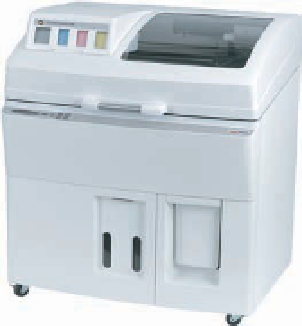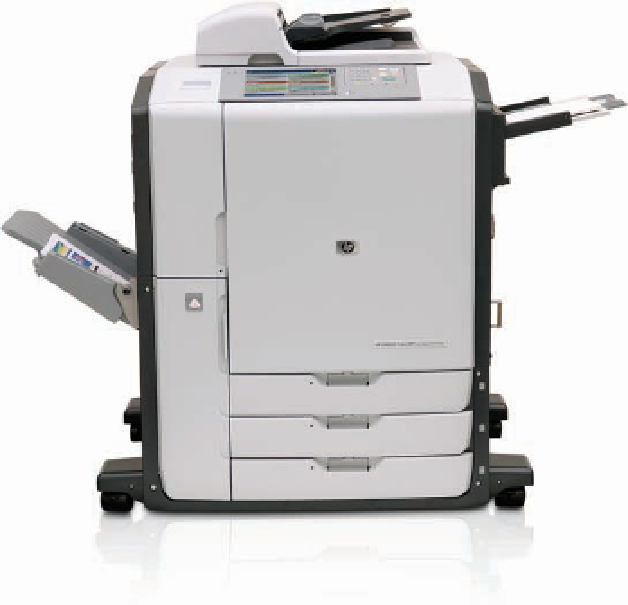Information Technology Reference
In-Depth Information
Figure 3.14
The Hewlett-Packard CM8060
Inkjet Printer
(Source: Courtesy of Hewlett-
Packard Company.)
Traditional inkjet printers rely on a moving print head and many fewer nozzles. The advan-
tage of the new technology is the ability to print pages much faster (50 pages per minute for
color and 60 pages per minute for black and white). In addition, the printer uses less ink.
44
A number of manufacturers offer multiple-function printers that can copy, print (in color
or black and white), fax, and scan. Such multifunctional devices are often used when people
need to do a relatively low volume of copying, printing, faxing, and scanning. The typical
price of multifunction printers ranges from $150 to $500, depending on features and capa-
bilities. Because these devices take the place of more than one piece of equipment, they are
less expensive to acquire and maintain than a stand-alone fax, plus a stand-alone printer, plus
a stand-alone copier, and so on. Also, eliminating equipment that was once located on a
countertop or desktop clears a workspace for other work-related activities. As a result, such
devices are popular in homes and small office settings.
3-D printers can be used to turn three-dimensional computer models into three-
dimensional objects. See Figure 3.15. One form of 3-D printer uses an inkjet printing system
to print an adhesive in the shape of a cross-section of the model. Next, a fine powder is sprayed
onto the adhesive to form one layer of the object. This process is repeated thousands of times
until the object is completed. 3-D printing is commonly used in aerospace companies, auto
manufacturers, and other design-intensive companies. It is especially valuable during the
conceptual stage of engineering design, when the exact dimensions and material strength of
the prototype are not critical.
Figure 3.15
The Spectrum Z510 3D Printer
(Source: Courtesy of Z Corporation.)






